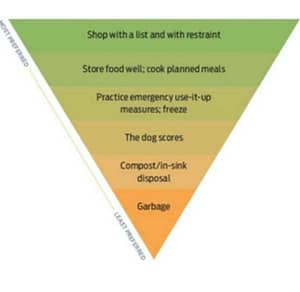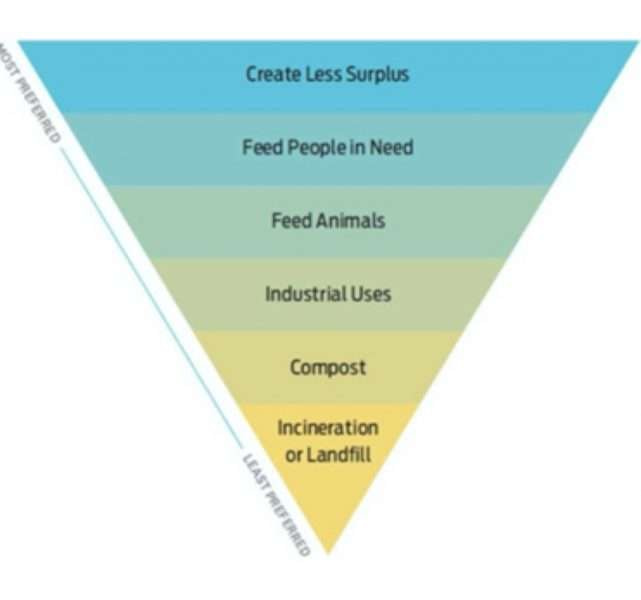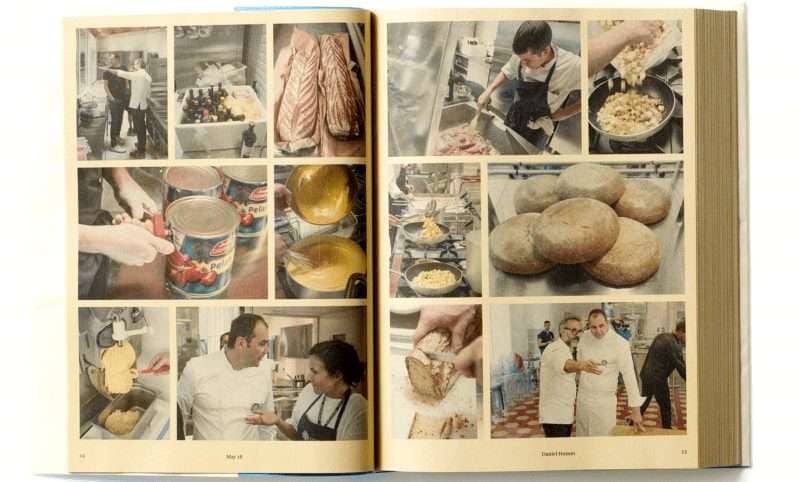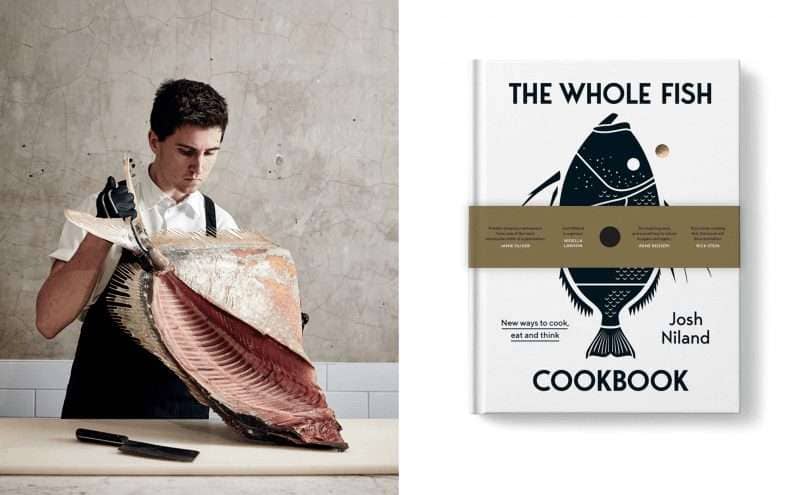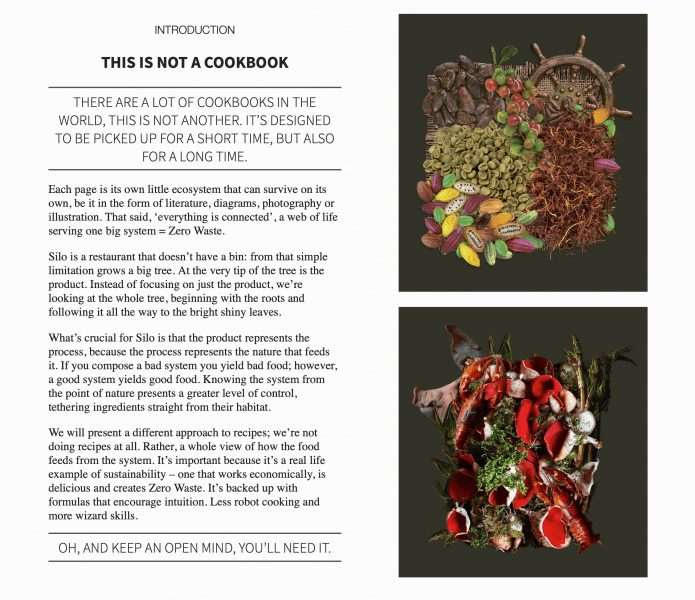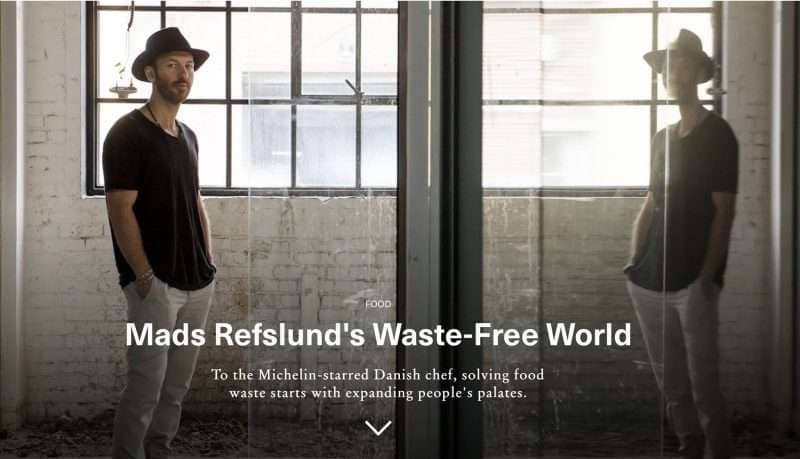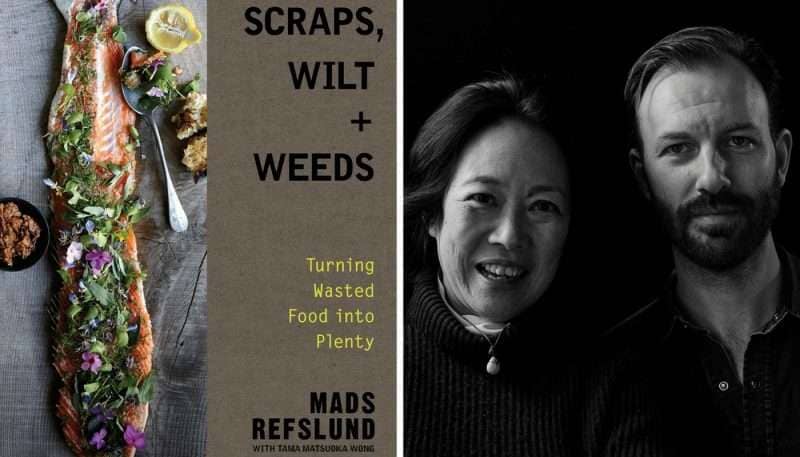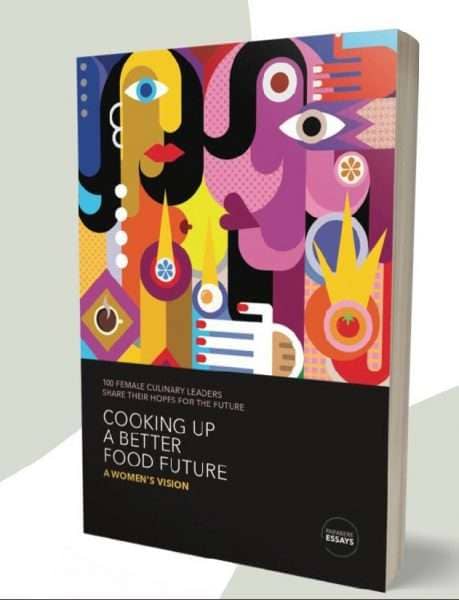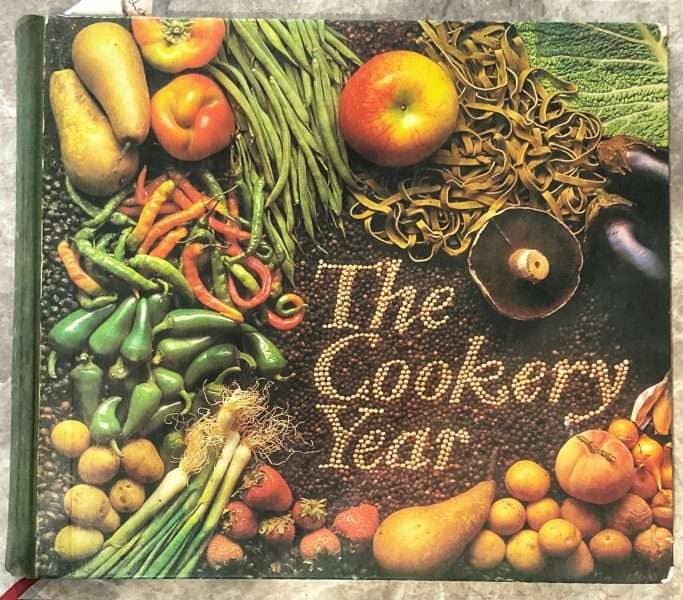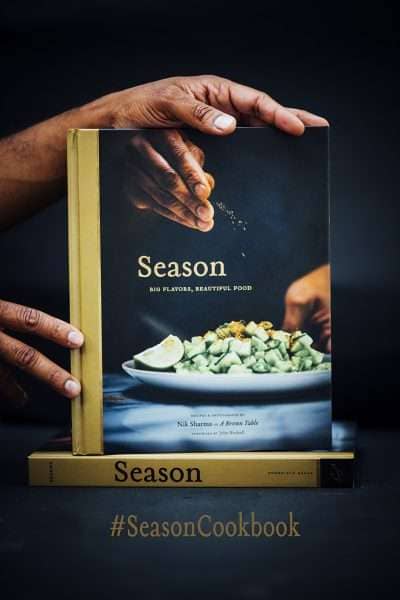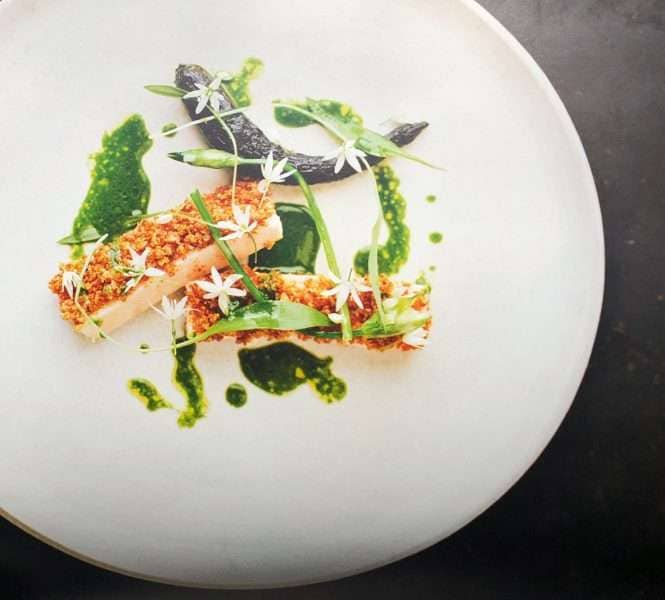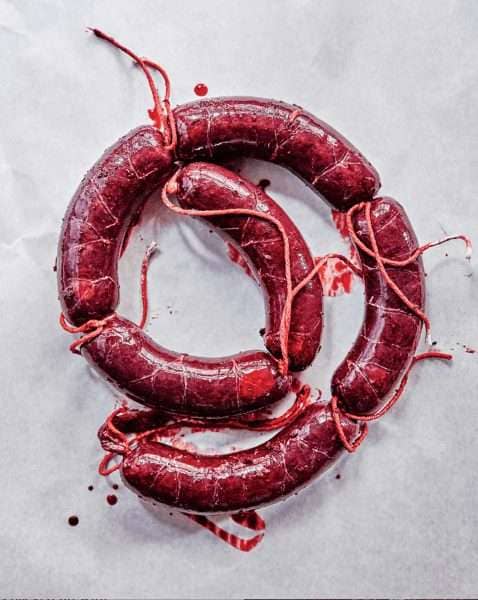A quote from Matt Orlando of Amass sums up the thrust of today’s piece for me:
“…chefs will [need to] acknowledge the consequences of this frenetic desire to have the best products from all around the world. You cannot do this. It’s not right. It’s not ethical.“
He goes on to say:
“I’m truly convinced that fine dining today is hardly sustainable. We cannot afford to cook like this for longer than a decade from now.”
He’s right of course. And despite the fact that — for some strange reason* — Noma wouldn’t let me book a reservation to eat there during next year’s Autumn menu season, I’ve forgiven them and still find the writing and ideas and, most particularly, the rather special — although not unique — thinking about food and the ‘no waste’ ethos, coming out of the kitchen & lab from the team led by René Redzepi, to be hugely inspiring. And challenging.
*(the entire seating sold out in less than 2 minutes, that’s why).
The people there (plus, most importantly, their regional local suppliers) all work to, essentially, apply the now familiar mantra: “reduce, recycle, repair, reuse” to the problem of food waste. These two graphics show (in descending order of preference) best practice for food shopping and disposing of any food waste. It’s not hard. It just requires some fore-thought and planning. For fucks’ sake, we’re hairless apes with opposable thumbs; and we’re supposed to be good at this thinking shit. Let’s start, eh?
Along with contemporaries (inc. ex-Noma co-founder Mads Reflund) such as Massimo Bottura and Dan Barber, earlier stars such as Alice Waters, on-going and unfailingly on point Fergus Henderson and the younger generation with chefs like Josh Niland and Douglas McMaster, the word is getting across to us Boomers. And a reminder of the word? “Stop wasting so much shit“. OK, five words but you know what I mean.
There’s no need for me to sing Fergus’ praises yet again in this article. Just click on this link and you’ll be able to read lots more paeans of praise from me.
In 2015, Massimo established Refettorio Ambrosiano — as his version of a community soup kitchen — coinciding with the Milan Expo. Not a complete unknown in the food world (that’s a major understatement by the way), he was able to ask some of Italy’s leading artists and designers to assist and they came along, turning an abandoned theatre into a space designed to be inviting, secure and warm, where their guests (the homeless and poor of the area) could feed both their body and soul. He also managed to blag over 60 of his chef friends into coming to visit to cook at the Refettorio throughout the run of the Expo, inc. René, Alain Ducasse, Alex Atala, Daniel Humm, Ana Roš and Gastón Acurio. Each chef agreed to prepare three-course meals out of supermarket surplus ingredients delivered ‘fresh’ every morning.
His “Bread is Gold” book serves to documents the first six months at the Refettorio.
The Australian fish chef (and fish butcher) Josh Niland, aged 29, just brought out a game-changing book on innovative ways to handle, preserve, cook & eat fish and, crucially — rather than wasting it — to find tasty methods to utilise the 65% (by weight) parts that traditionally have been ignored and more often than not (in the West at least) then wound up in the garbage. There’s more on him in this earlier post.
Douglas McMaster opened Silo in 2014 in Brighton, launching Britain’s first “zero-waste restaurant” after a crowdfunding campaign. With ideas, that are now par for the course in Shoreditch and other hipster hangouts, his (possibly slightly dazed & confused) diners found themselves seated on packing crates, drinking their cocktails from jam jars and eating ‘scraps’ off plates made from recycled plastic shopping bags. He closed it earlier this year, only to then re-open in London (Nov ‘2019) and in the meantime, still found the time to write his “not a cookbook” cookbook, called “Silo: The Zero Waste Blueprint“. And here’s a really informative article about his thinking (before you rush out and buy the book which I’d encourage you to do).
“Zero waste works hand in hand with Minimalism and other lifestyle movements which can bring great relief on life’s anxious demands. Practically speaking it will save you money, it’s likely to make you healthier because most zero waste purchases are whole, organic and bring back fundamental life trends (such as cooking) which are philosophically crucial to our existence.”
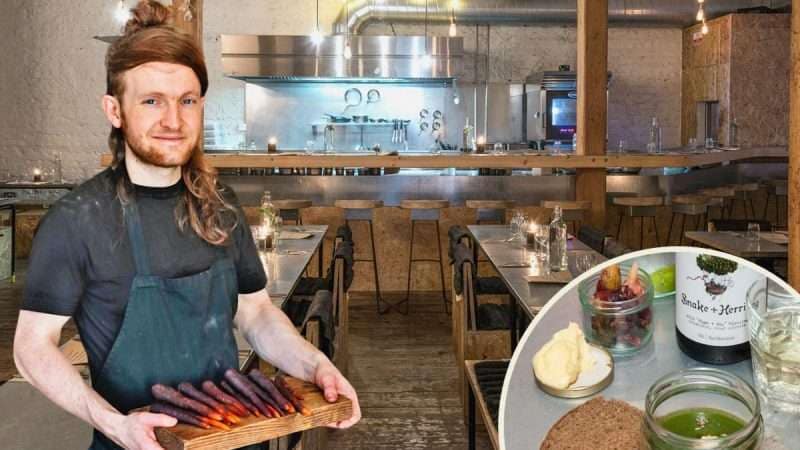
After falling out with Redzepi over the demands Noma made on both of them, he went on to found his own place, MR — which gave him another Michelin star — followed when it closed, by a move to New York. Shopping and cooking in The Naked City served to bring into sharp focus for him, the truly obscene levels of waste that the US consumer system, (and in the rest of the West but the US in particular), encouraged. He’s cooked since then trying to show that this is stupid, dumb and, even for humans, is reaching ultimately planet killing levels of deliberate, obtuse, mad blindness. His book (“Scraps, Wilt & Weeds: Turning Wasted Food into Plenty“) offers a different view of those items (carrot tops, bruised fruit, old vegetables etc. etc.) that you (and me) are still ignoring. So pay attention; he’s very, very good. You could be too…
And before I get any (understandably) irate emails/comments, please note, I do realise that, apart from Tama Matsuoka Wong, co-author with Mads and forager extraordinaire for none other than Daniel Boulud, there are no women mentioned in this group. Her 2012 book “Foraged Flavor: Finding Fabulous Ingredients in Your Backyard or Farmer’s Market” is an obvious influence on many of the others I cite here. It’s worthy of an article in its own right, so watch this space.
That there are however at least as many women as men also working in this same area is a given and my earlier post — that should have gone out on International Women’s Day but, finger tech trouble, you know? — covers a whole fine, bunch of them. As they get the opportunity to release books (and I know that the comparative lack of books in this area written by non-male, white chef bros is also an issue as well), I’ll be covering them here. In the meantime, keep your eyes on The Parabere Forum.
In today’s despatch from the “there’s really nothing new under the sun” train, I’d also recommend two, much earlier books. One talks about regenerative farming, long before it became a (revisited) topic — esp. in the West — called “Sowing Seeds In The Desert” by Masanobu Fukuoka in 1996. His earlier one from 1975 “The One-Straw Revolution“, introduced natural farming, a nature-integrated practice similar to ‘original’ permaculture, to a world where the environmental movement had only just started to take shape.
He lived in Iyo, Japan until he died at the age of 95 and for his whole life, expounded the following five principles of natural farming. I’ve not (yet) read this book through or digested the contents enough, to know whether I agree (or disagree) with the “no compost” and “no pruning” rules but…
- human cultivation of soil, plowing or tilling are unnecessary, as is the use of powered machines
- prepared fertilisers are unnecessary, as is the process of preparing compost
- weeding, either by cultivation or by herbicides, is unnecessary; instead, only minimal weed suppression with minimal disturbance should be used
- applications of pesticides or herbicides are unnecessary
- pruning of fruit trees is unnecessary
…and then from 1974, comes one by the Readers’ Digest called “The Cookery Year”. It speaks of seasonal produce, declares war on wasting food & looks at economising when shopping. With Brexit threatening to take us back to the same disastrous dark days this one is a keeper. At least until we’re down to having nothing to eat apart from some old, shrivelled turnips. Or each other. Hmmmmm. That combination actually sounds like the start of a tasty stew. “Brexit Long Pig Revenge” anyone?
A quote from Kieran Jefferson, an online friend who lives in France and is also the editor for Locavore Magazine (to which you definitely should also subscribe)…
“My days are spent in dirt. I till some of the vegetable beds, with others left undisturbed; these have been constructed from layers of dead leaves, horse manure, and grass, an experiment in no-dig gardening. Soil structure being key, we are coming to realise that we do not grow crops, we are dirt farmers. Adding a top layer of organic matter and letting the rains and the worms do the rest, allowing the earth to remain undisturbed, keeping carbon and nutrients locked away. Nature cultivates the depths, and we tend the surface. It is less backbreaking, certainly, and we will see if we get more of the fruit for less of the labour.”
…reminds me again (if any reminder was needed) of the truly vital, VITAL, role that soil plays for everyone and almost everything on this planet. His whole piece repays the time needed to read it. Poetic, didactic, funny, all in equal measure.
On a recent trip to Cornwall, we were lucky enough to meet up with and spend some hours talking to, Fred Price of Gothelney Farm. His farming methods, regenerative, pesticide and additive free, using some beautiful Tamworth pigs to till, fertilise and improve the soil, could have come almost straight from the pages of Fukuoka’s book. Fred is young, whip-lash smart, committed, impassioned and one to watch. This is how farming should (and indeed was) be done. More farmers need to move away from their pillaging of the soil and back to a cycle of life (and death).
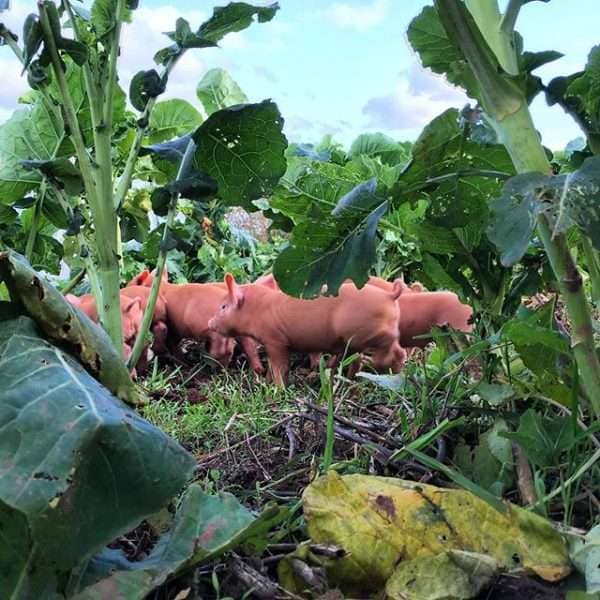
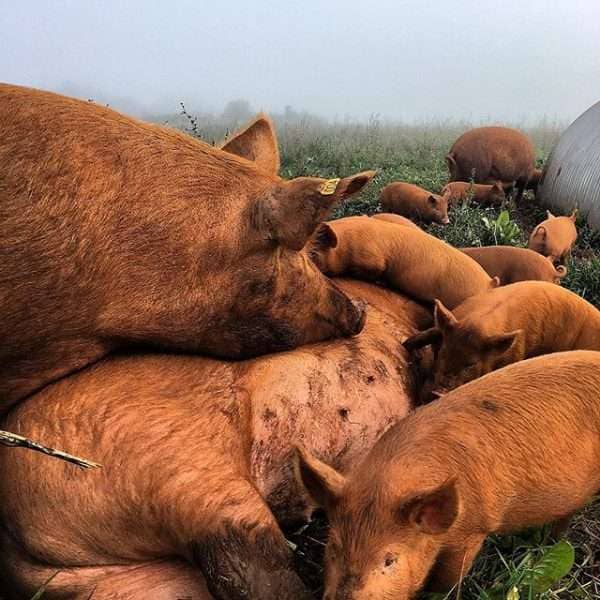
And finally, whilst Val may complain about my cooking books habit, at least my wall doesn’t look like this. Yet. This is just one section from the set of the books collected by Nik Sharma, an Indian born chef living in the US who writes under the “A Brown Table” heading.
You should buy his book BTW; the cover is stunning, the contents just as much new fun, and read his blog.
And finally, finally? To bring it back onto the pork road, I’ve taken a couple of recipes from some of the chefs talked about earlier:
PORK BELLY AND PORK SCRATCHINGS
RAMSONS LEAVES,
SHOOTS,
STEMS AND FLOWERS
Ingredients:
800g pork belly (side)
125g salt
200g pork rind
1 onion
milk, for blanching
50g plain (all-purpose) flour
grapeseed oil, for frying
1 potato
200g ramsons (wild garlic) leaves
425g light chicken stock
40g butter
15g chicken glace
15g rapeseed (canola) oil
4 baby cucumbers
8 small ramsons (wild garlic) leaves
8 small shoots ramsons (wild garlic)
24 ramsons (wild garlic) flowers
15g chicken glace
Process:
Pork belly
Remove the bones and the skin from the meat and sprinkle it with the salt. Let it cure in the ‘fridge for 24 hours. Rinse the salt from meat and poach it in a vacuum bag at 75°C for 12 hours. Cool immediately, and cut into portions when cold.
Pork scratchings
Mince the pork rind straight from the refrigerator, add the minced fat to a pan or pot and start melting slowly at low heat. Keep turning up the heat gradually, stirring from time to time, until the temperature reaches 130°C. By this time the solid components of the fat should be crisp. Strain off the scratchings and discard the fat. Chop the onions and blanch them in milk for 1 minute. Strain and cool. Dust them with the flour and fry in grapeseed oil at 180°C until crisp and golden. Slice the potatoes, fry them in the same oil until crisp, then cool and crush into smaller pieces. Mix together the onions, potatoes and scratchings in equal quantities.
Ramsons sauce
Blanch the leaves in the chicken stock, and cool. Process in a Thermomix for 2 minutes, then strain. Add the chicken glace.
Grilled cucumber
Char-grill the cucumbers on one side only, to avoid overcooking them.
Garnish
Pick the leaves, shoots and flowers into ice water and spin them dry. Store on dry paper until you serve the dish.
Serving:
Heat the ramsons sauce, add the softened butter and emulsify. Split it with the rapeseed oil. Sauté the portions of pork belly on both sides, add the chicken glace and sprinkle the crispy scratchings mixture on top. Place on the plate together with the cucumber and the sauce. Arrange the garnish around the meat and serve.
And if you got all that right, yours will look just mine* did in the shot below.
*[not mine, obviously] Recipe taken from “Noma: Time and Place in Nordic Cusine”
followed by…
BLOOD SAUSAGE
Spice mix
2 parts nutmeg
2 parts black pepper
1 part star anise
1 part cinnamon
1 part clove
• Grind into fine powder freshly before use.
Blood cake
4 parts blood
1 part soft caramelised onions (light golden brown colour)
1 part cured pork back fat
0.5% salt
Preparation
• Dice the fat into neat 1cm cubes.
• Cook blood in a heavy-based pan on a low heat until the temperature reaches 62°C, then take off the heat and add the other ingredients.
• Once evenly mixed, pour into an appropriately sized tray lined with greaseproof paper – the mix should be at least 4cm thick.
• Cook in a steam oven set at 90°C until the internal temperature reaches 85°C.
• Chill quickly, then cut to weight.
This comes from Silo, McMaster’s book. And as I’ve not been able to find a picture of Douglas’ cake; instead, here’s one taken of Mad’s Blood Sausage. Both, finest kind.
